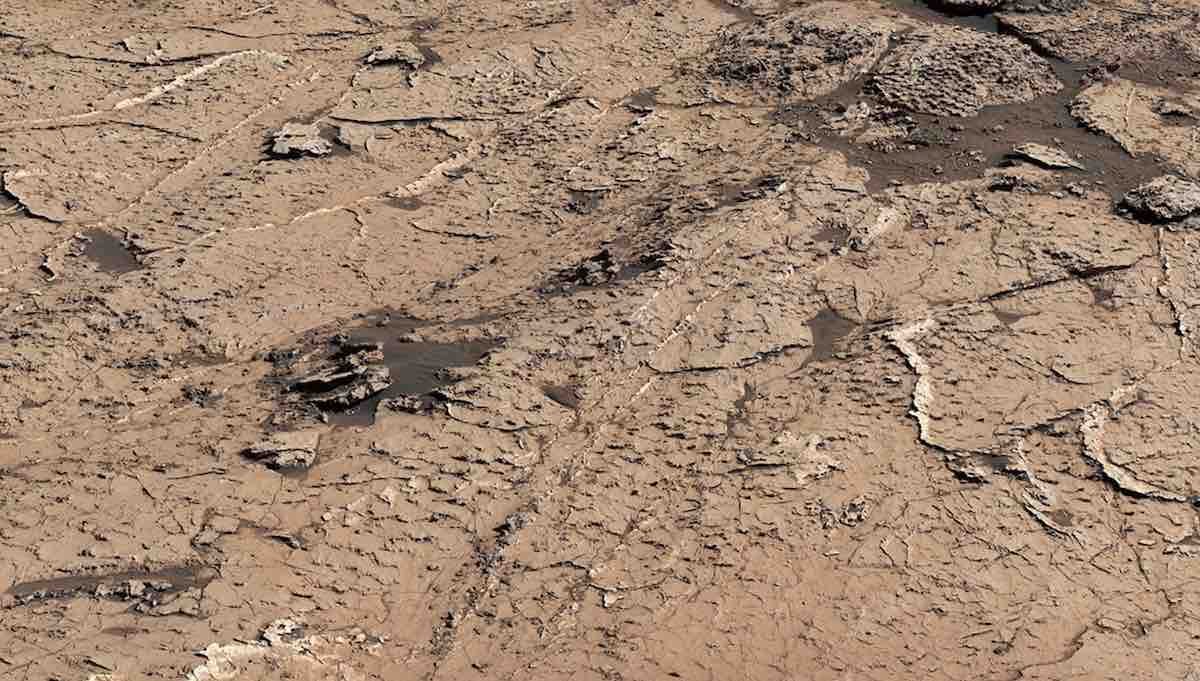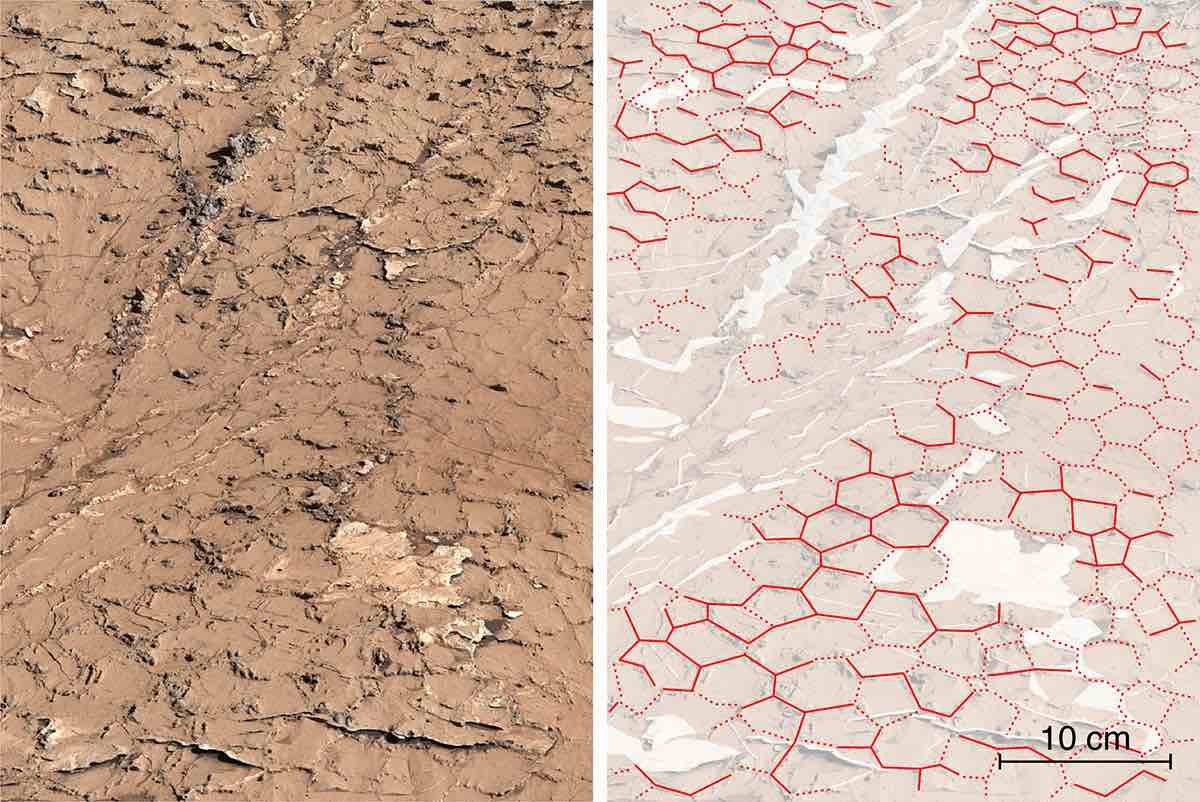The first fossil evidence pointing to an environment that once could have hosted life on Mars has been reported by scientists, who say the discovery of hexagonal patterns in ancient Martian mud suggests it once had a cyclical climate with seasons similar to those on Earth.
The detection of distinctive hexagonal patterns on a portion of the Martian terrain has been described as a “major discovery”, made possible with data obtained by NASA’s Curiosity rover.
The new findings, along with the previous detection of simple organic molecules, offer mounting evidence that the Red Planet once had conditions ideal for the formation of more complex compounds, and possibly even forms of life.


The research that led to the discovery, undertaken by scientists at France’s CNRS with the additional participation of the French space agency, CNES, recently appeared in the journal Nature.
Since interactions between plates that form the outer lithospheric part of Earth, a process known as plate tectonics, do not occur on Mars, large portions of the Red Planet’s terrain that include ancient fossil rivers and lakes have remained well preserved on its surface.
These regions of Mars were first explored by Curiosity beginning in 2012, leading to the initial detection of the presence of simple organic molecules. Although geological processes can lead to their creation, the presence of these molecules could also indicate that life forms were once present. However, for that to be possible, an environment conducive to their formation would also be required.


Now, according to the French research team with CNRS and CNES and their U.S. and Canadian partners, the latest evidence seems to indicate that such an environment did indeed exist, and that life on Mars could have once also existed long ago.
The discoveries, made possible with Curiosity’s Mastcam and ChemCam instruments, were made through the detection of salt deposits that formed a series of hexagonal patterns in layers of Martian sediment dating back to between 3.6 and 3.8 billion years ago.
Comprised of a pair of camera systems mounted on the rover’s head, the Mastcam is designed to capture detailed images of the Martian terrain, whereas the rover’s ChemCam involves both a camera, and several remote sensing capabilities that allow it to investigate soil and rock samples it discovers. Combined, the two instruments are able to provide a wealth of data about the planet’s rich geology, as well as conditions on Mars that may have once been suitable for life.
William Rapin of France’s Institut de Recherche en Astrophysique et Planétologie and the lead author of the new paper describing the discovery, says the formation of mud cracks like the ones found by Curiosity is a clear indication of seasonal change where wet and dry conditions occur repeatedly.


Rapin and the research team say these salt deposits are the first direct fossil evidence of an ongoing cyclical Martian climate where both wet and dry seasons occurred in its ancient past, although previous research had already suggested changes in the seasonal environment on the planet would be capable of providing conditions perfect for the formation of complex compounds that form the building blocks of life.
“This is the first tangible evidence we’ve seen that the ancient climate of Mars had such regular, Earth-like wet-dry cycles,” Rapin said in a statement, emphasizing that such cycles may even be a requirement “for the molecular evolution that could lead to life.”
Based on information the team has obtained, imagery obtained through satellite reconnaissance of the surface of Mars should help scientists spot other regions with similar terrain to the location where these salt deposits were found, which may also be good candidates for the discovery of evidence of ancient life forms.
In the future, additional studies of the largely uninterrupted Martian terrain may help reveal more clues about what conditions could have led to the formation of life on Mars, information that will also help scientists better understand how such processes unfolded in Earth’s ancient past.
“It’s pretty lucky of us to have a planet like Mars nearby,” Rapin says, “that still holds a memory of the natural processes which may have led to life.”
The team’s paper, “Sustained wet-dry cycling on early Mars,” was published in the journal Nature on August 9, 2023.
Micah Hanks is the Editor-in-Chief and Co-Founder of The Debrief. He can be reached by email at micah@thedebrief.org. Follow his work at micahhanks.com and on Twitter: @MicahHanks.

